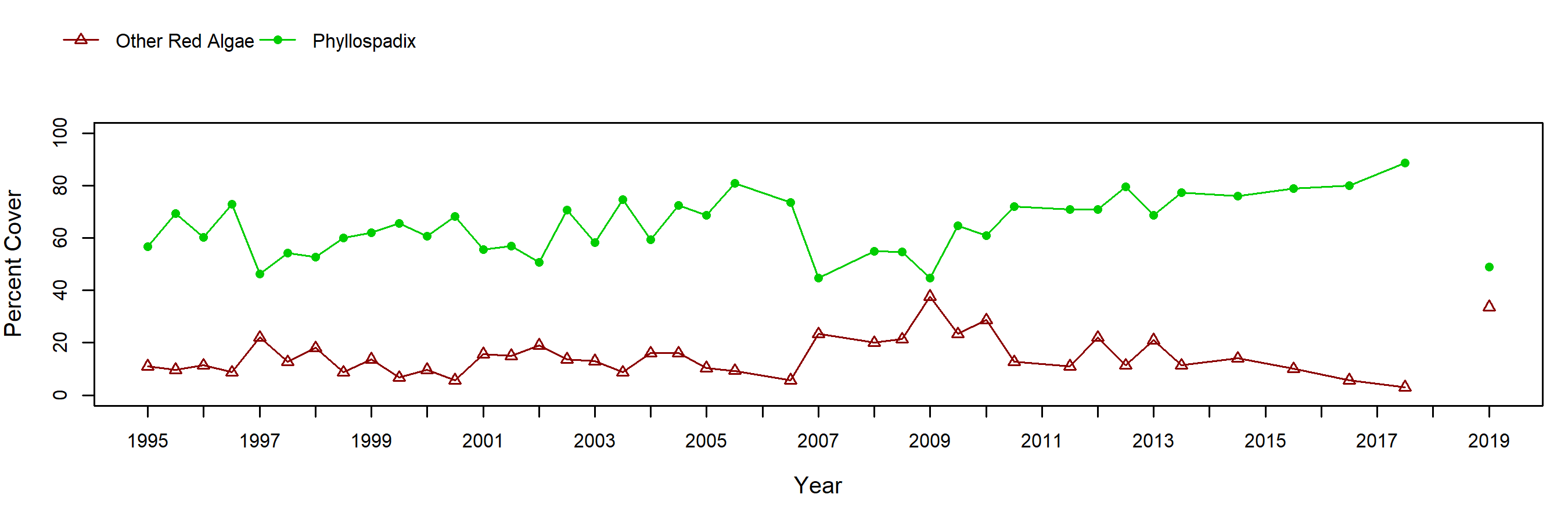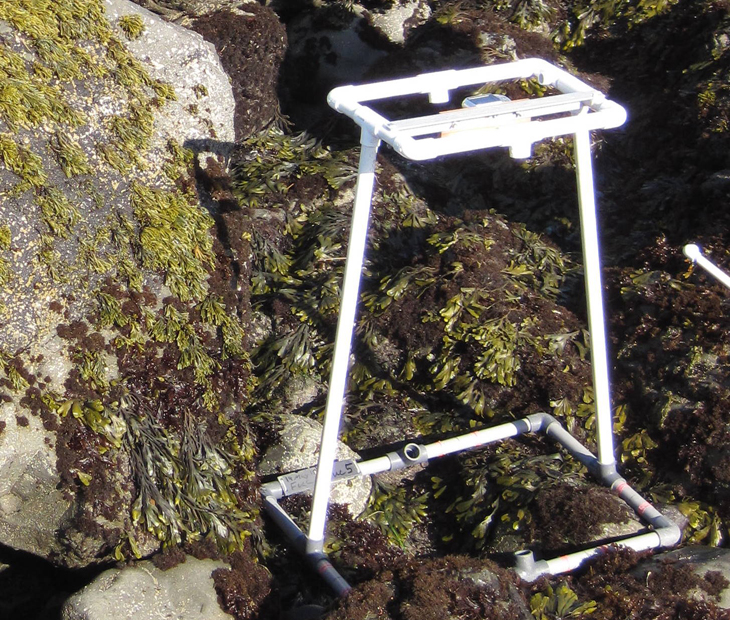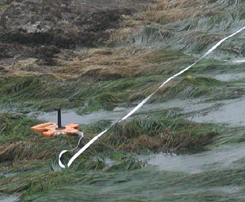Fraser Cove Long-Term trends | MARINe
Fraser Cove Long-Term trends
See below for trend graphs
In order to standardize species resolution across all MARINe groups, and over time, some species (typically rare) were lumped for graphical presentation of Long-Term monitoring data. See lumped categories for definitions (some variation occurs between methods and over time).
Photo Plots
Below are the trends observed for each Photo Plot target species at this site. Long-Term percent cover trend graphs also include any species that reached a minimum of 25% cover during any single point in time within a given target species assemblage. Breaks in trend lines represent missed sampling events. For additional species observed that did not meet this 25% threshold, please use the Interactive Map.
For motile invertebrate Species Counts, a mean across all plots was calculated, and only those species with a value of at least 5 individuals for at least one sample are shown. Due to time constraints, motile invertebrate counts have not been done at most sites since 2012. For motile invertebrate size trend graphs by site, please use the Interactive Map.
Chthamalus/Balanus (Acorn Barnacles) - percent cover
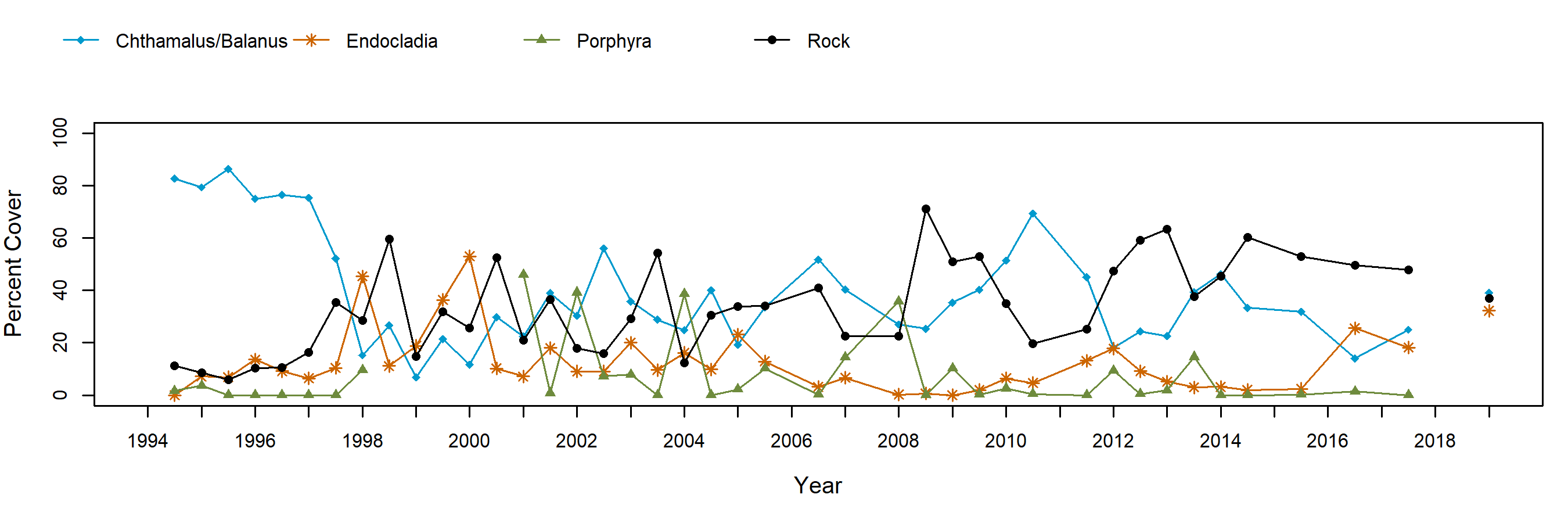
Chthamalus/Balanus (Acorn Barnacles) - motile invertebrate counts
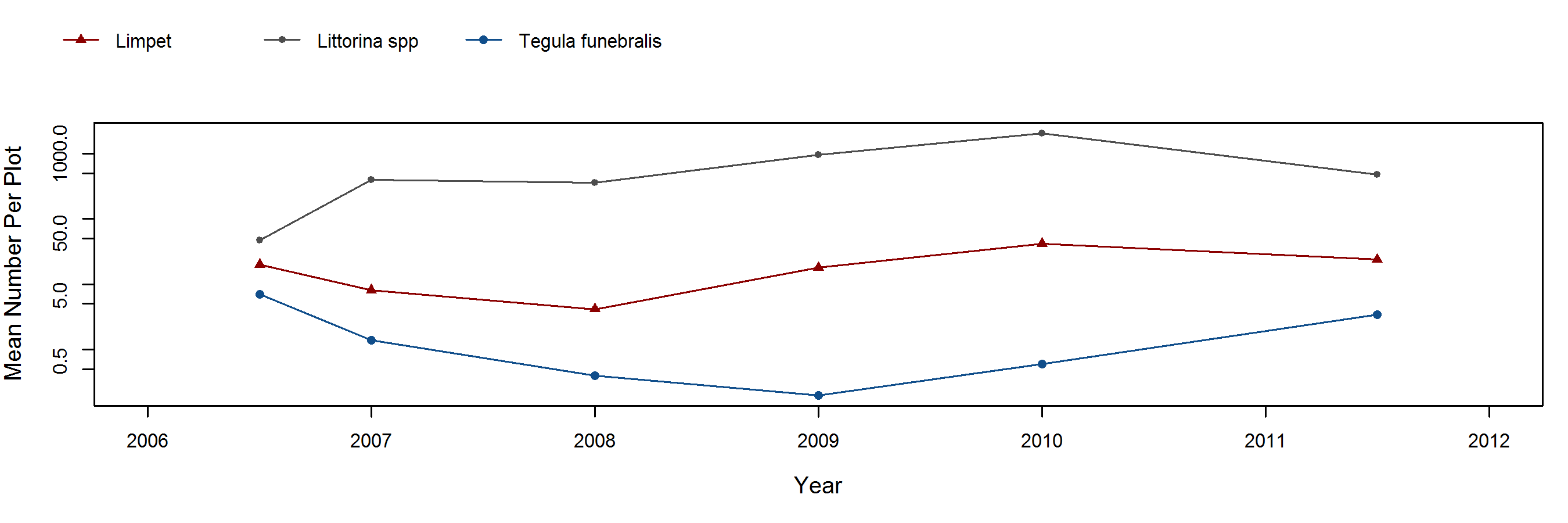
Pollicipes (Goose Barnacle) - percent cover
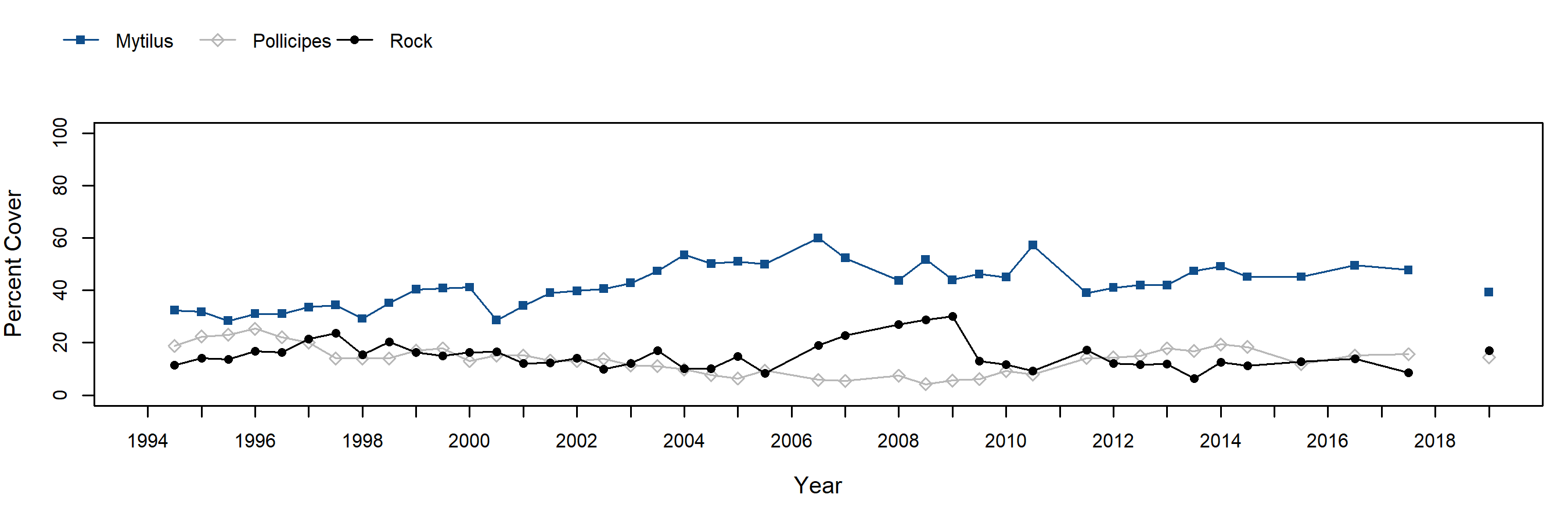
Pollicipes (Goose Barnacle) - motile invertebrate counts
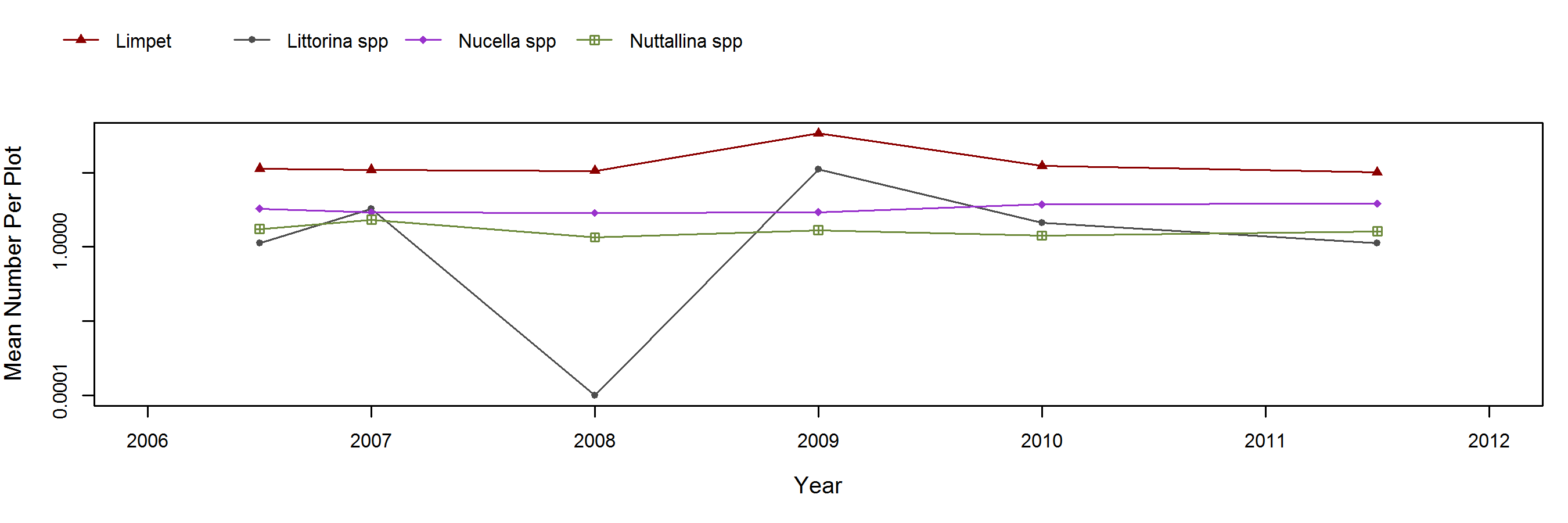
Mytilus (California Mussel) - percent cover
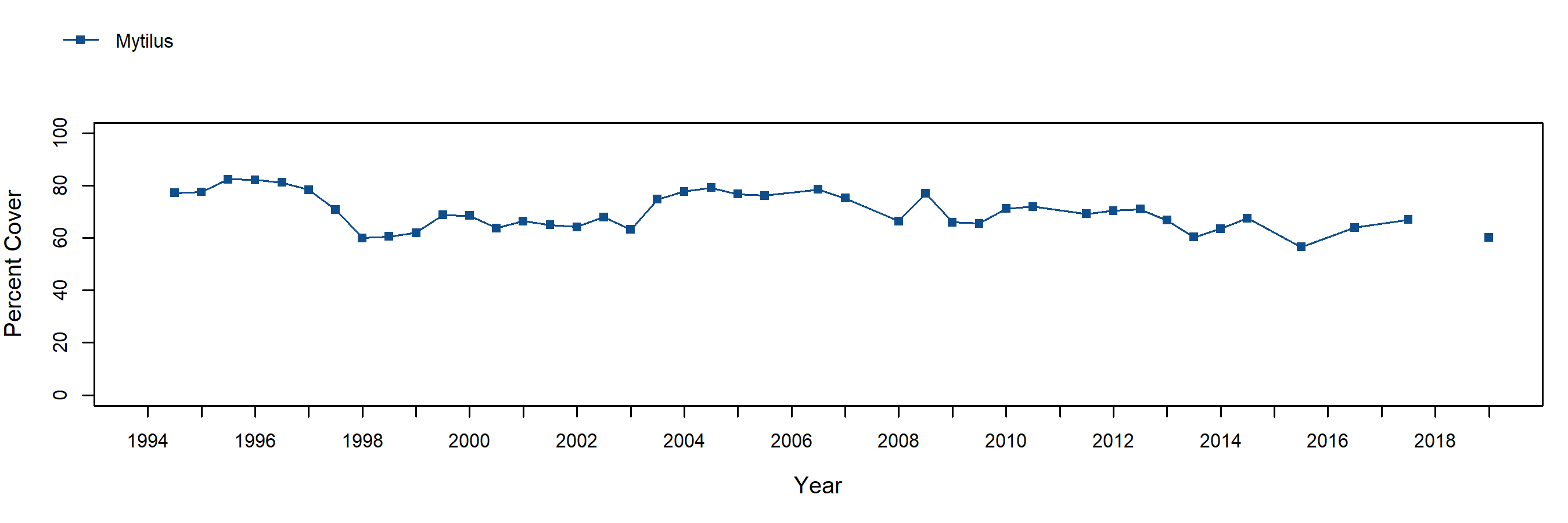
Mytilus (California Mussel) - motile invertebrate counts

Hesperophycus (Olive Rockweed) - percent cover
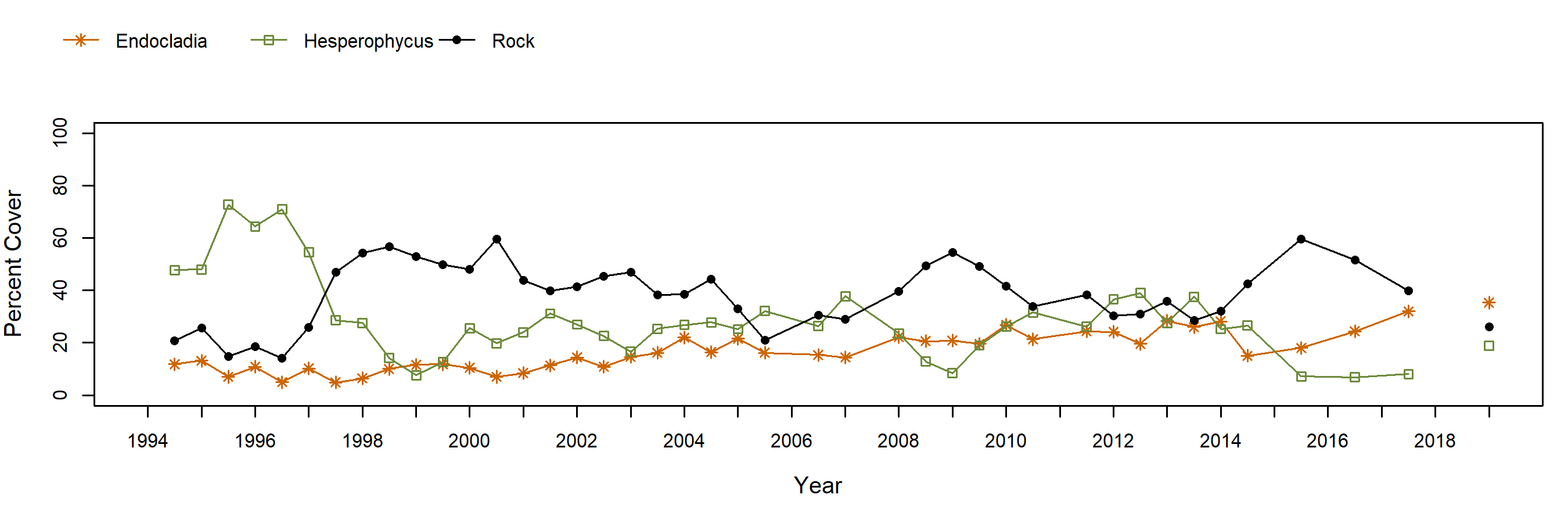
Hesperophycus (Olive Rockweed) - motile invertebrate counts

Silvetia (Golden Rockweed) - percent cover
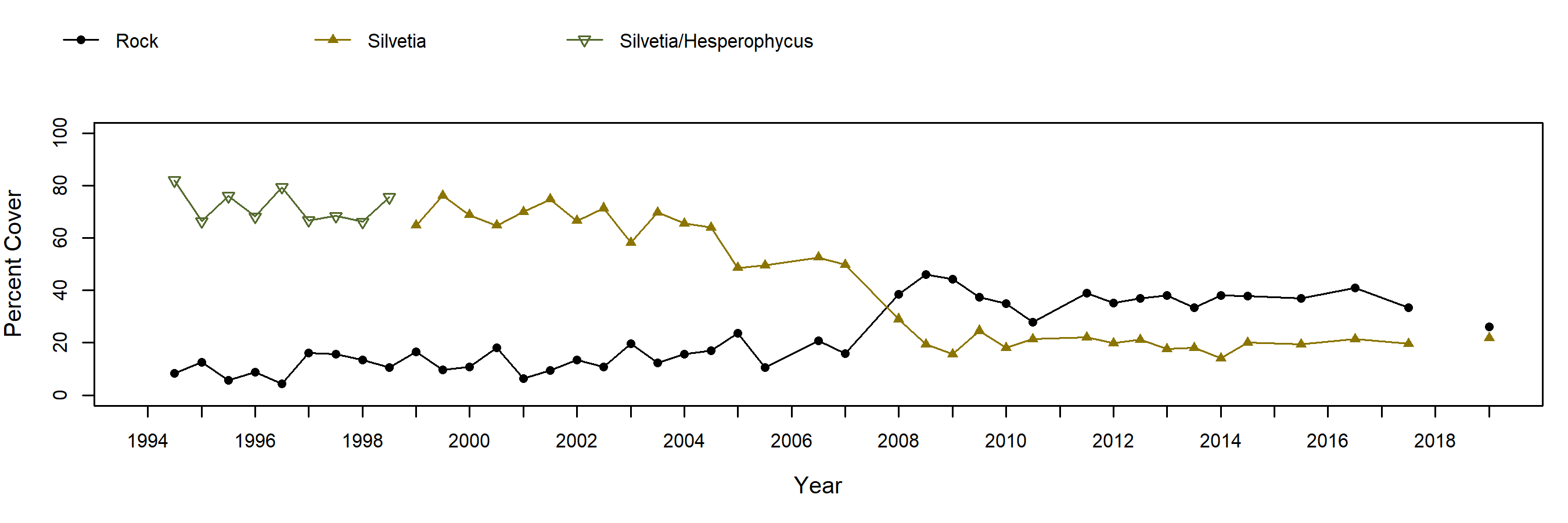
Silvetia (Golden Rockweed) - motile invertebrate counts
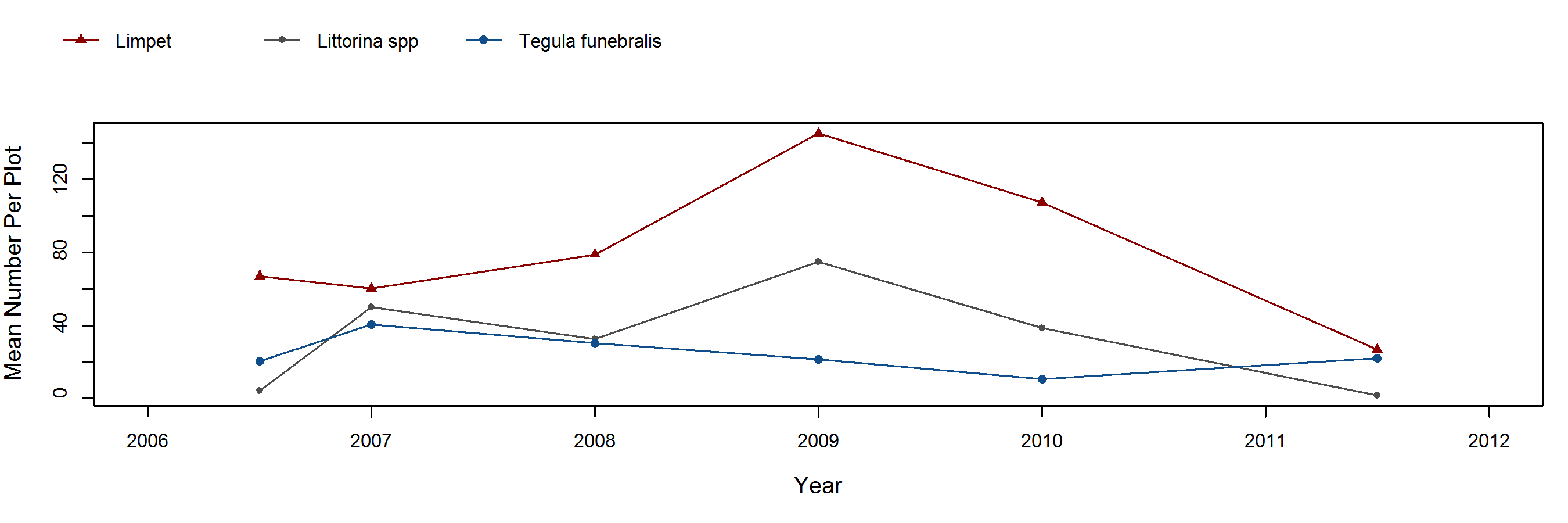
Endocladia (Turfweed) - percent cover
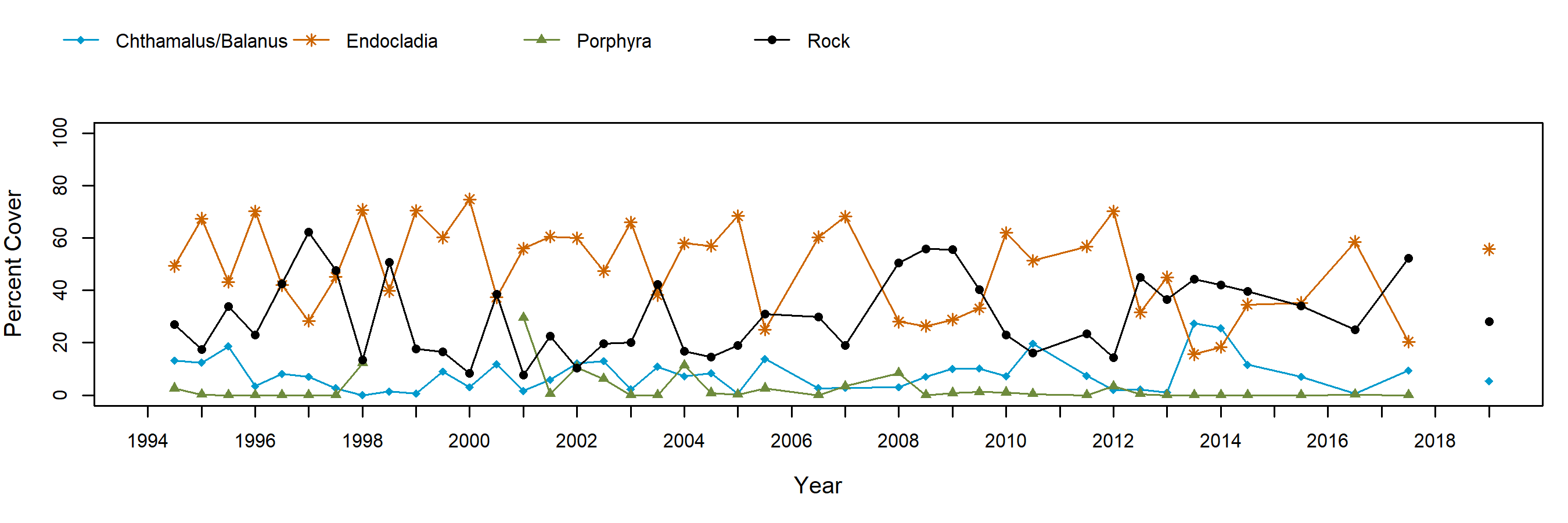
Endocladia (Turfweed) - motile invertebrate counts

Tar - percent cover
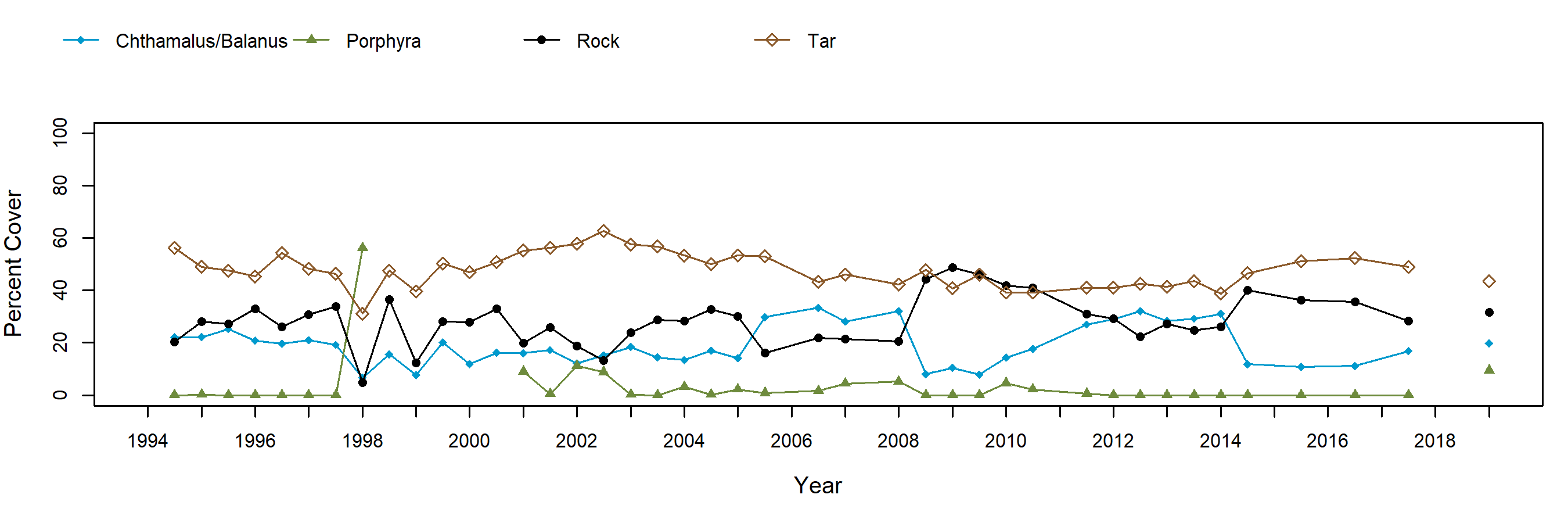
Tar - motile invertebrate counts
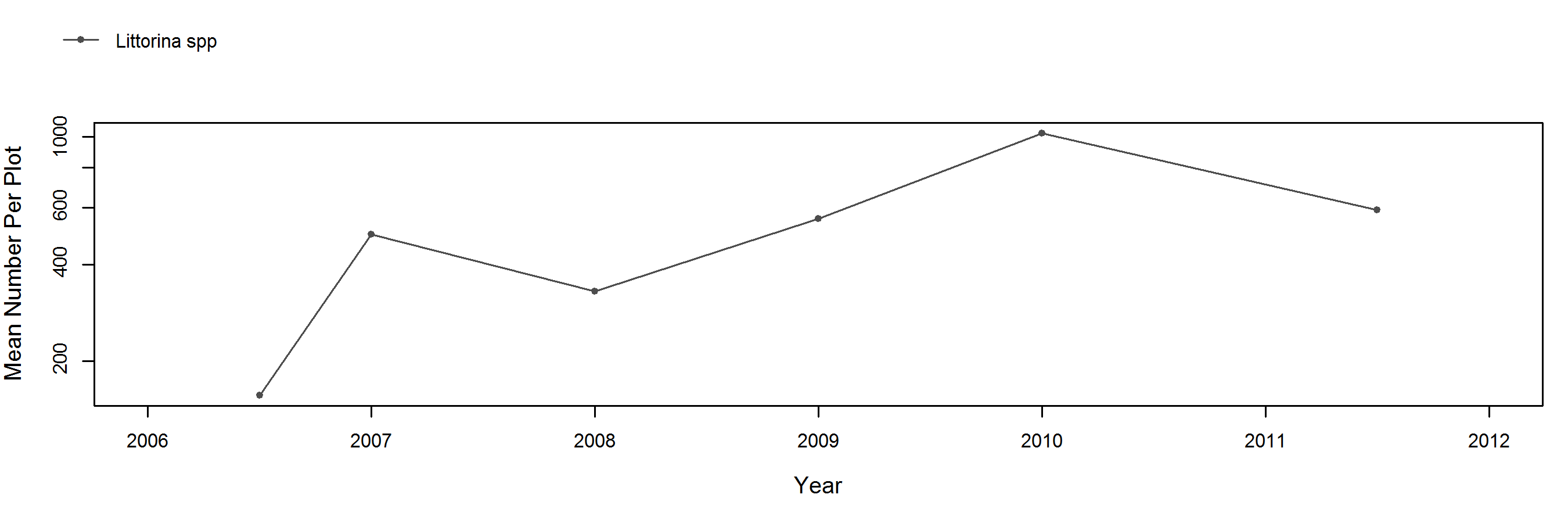
Transects
Below are the trends observed for each Transect target species at this site. Long-Term trend graphs also include any species that reached a minimum of 25% cover during any single point in time within a given target species assemblage. Breaks in trend lines represent missed sampling events.
Phyllospadix (Surfgrass)
